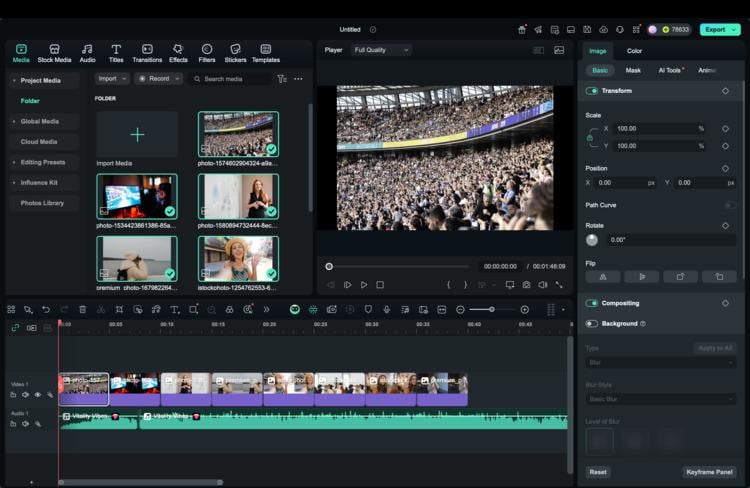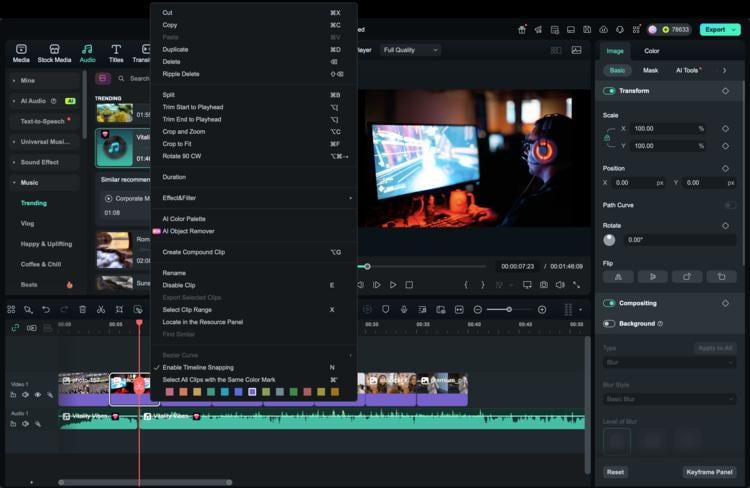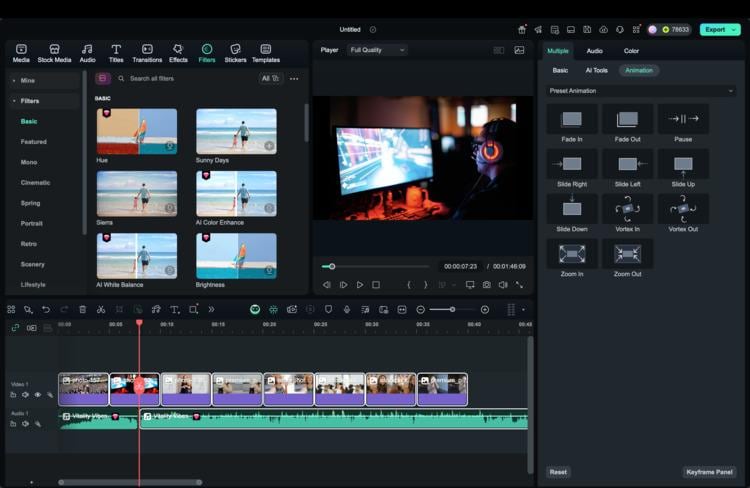In this article
-
What is Non Linear Editing in Video Production?
-
Application Section - When/Where to Use
-
How to Learn Non Linear Video Editing?
Understanding Non Linear Editing
Video editing has evolved from a tape-based process into a software-driven workflow. Today, non-linear video editing (NLE) has become the industry standard. It replaces traditional linear methods. This shift allows creators to move freely within a project. Creators can edit scenes in any order and make adjustments without overwriting the original footage. It is essential to understand the difference between linear and non-linear editing.
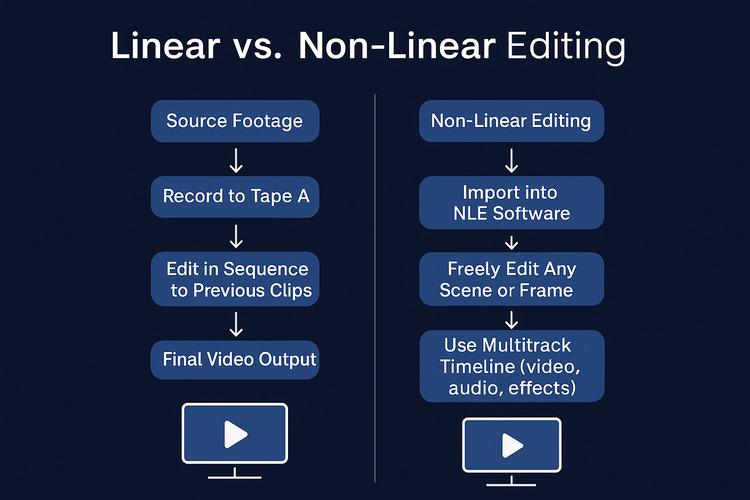
Non-linear editing is a method that lets users access any frame at any time. This makes editing random, flexible, and efficient.
It allows editors to make creative changes without touching the original footage. Because footage is digital, NLE systems offer real-time previews and instant access. Editors can layer video, audio, and effects across multiple tracks. This method suits projects that need speed, control, and accuracy.
Core Principles of Non-Linear Editing:
Key Differences of Linear and Non-linear Editing
Before choosing a method, know it’s necessary to the difference between linear and non-linear editing. Linear editing follows a fixed order. Meanwhile, NLE video editing gives full control over sequence, layers, and quality.
| Feature | Linear Editing | Non-linear Editing |
| Editing Order | Sequential; must follow the tape order | Any order; editors can access and rearrange clips freely |
| Workflow Type | Tape-to-tape; destructive | Digital and software-based; non-destructive |
| Speed | Slower; changes require re-recording | Faster; changes apply instantly with real-time preview |
| Hardware Requirements | Requires specialized decks and analog systems | Runs on modern computers with NLE software |
| Preservation of Quality | Quality degrades with repeated edits or copies | Maintains original quality regardless of editing stages |
Benefits of Non-linear Editing over linear editing
-
Efficiency Gain: Edit scenes in any order. Rearrange clips fast. Try creative changes without starting over.
-
Quality Improvement: Use real-time previews and multitrack timelines. Apply changes without harming the original footage.
-
Resource Optimization: Use proxy files, hardware acceleration, and smart media tools to speed up editing.
-
Error Reduction: Undo mistakes easily. Use auto-save, version tracking, and markers to stay on track.
Application Section - When/Where to Use
Implementing Non-linear Editing in Video Production:
Thanks to its flexible workflow, non-linear video editing has become the preferred method. Unlike linear editing, NLE allows editors to work on any part of the timeline at any time. This freedom suits projects with frequent changes, tight deadlines, and different formats.
Case Analysis:
Case 1: Editing a Short Film with Multiple Scene Versions
Short films often involve various takes and scene arrangements. With non-linear editing, editors can test different versions without redoing the entire timeline. It also applies to other editing, such as checking the jump between storylines and comparing outcomes.
Case 2: Social Media Content Creation for a Brand
Brands often need fast, adaptable content for platforms like Instagram, TikTok, and YouTube. NLE video editing lets creators duplicate timelines and apply batch edits. Editors can also resize content for multiple aspect ratios without starting over. NLE tools also support reusable templates, audio overlays, and animated text. It helps maintain brand consistency with minimal effort.
Bottleneck Identification and Resolution:
While non-linear editing offers major advantages, it can also introduce workflow bottlenecks if not managed properly. Below are common challenges and how to resolve them efficiently.
The timeline becomes visually crowded with too many layers of video, audio, graphics, and effects. Playback slows down, and it’s difficult to locate or manage specific clips. Resolution Strategies
-
Use color coding, track names, and timeline markers to organize elements.
-
Collapse unused tracks or group clips into compound sequences.
-
Clean up or archive unused media to declutter the workspace.

Lag during preview or when scrubbing through 4K/6K clips makes it difficult to apply real-time effects or transitions.
-
Enable proxy editing to work with lightweight versions of footage.
-
Lower the preview resolution within the software.
-
Activate GPU acceleration and close unused applications to free system memory.
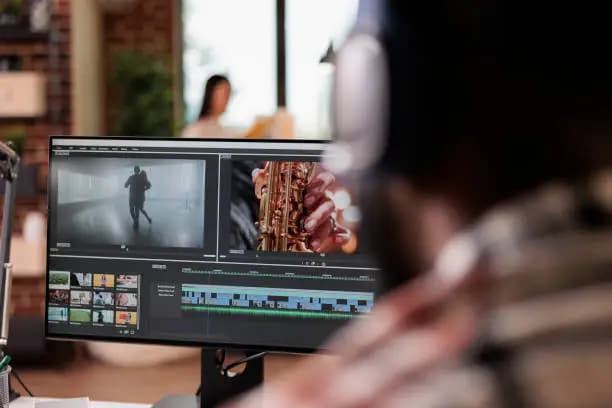
Using a multitrack timeline with heavy effects can result in significantly longer export durations.
-
Pre-render complex segments before final export.
-
Use hardware-based encoders (e.g., NVENC or Quick Sync) for faster rendering.
-
Export in background mode and allocate sufficient disk space and RAM.
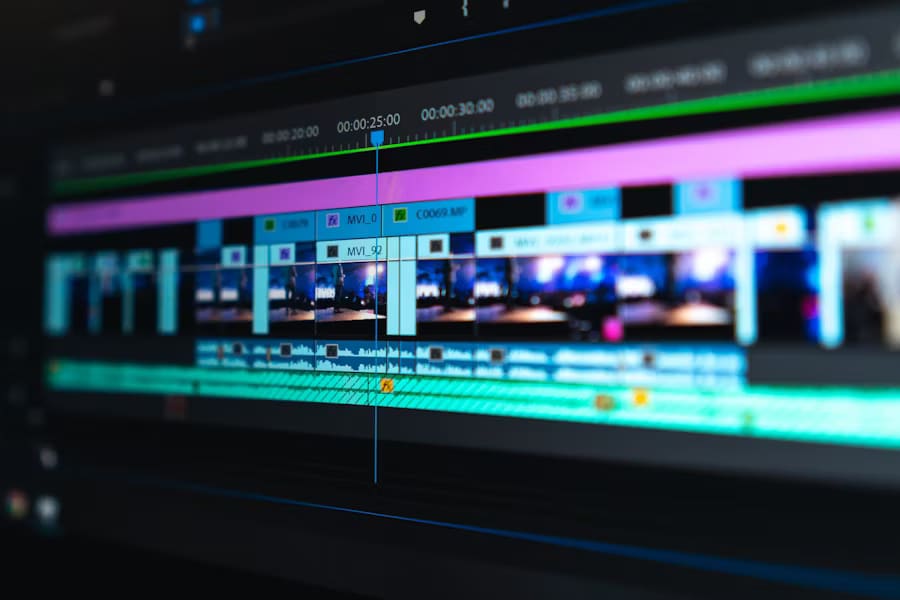
How to Learn Non Linear Video Editing
Many tools today support non-linear video editing, each offering different features and workflows. When selecting the right software, look for core NLE features. For example, multitrack timelines, drag-and-drop editing, and non-destructive changes. You can also check real-time preview and support for high-resolution formats. Compatibility with plugins and built-in effects is also useful for enhancing your projects.
If you're new to video editing or prefer a simple interface, Wondershare Filmora is the best non linear video editing software. It offers a complete non-linear editing experience without the complexity of high-end software. Filmora is ideal for short films, social media content, tutorials, and even marketing videos. Thanks to its clean layout, smart editing tools, and creative effects library.
How to Use Non-linear Editing in Filmora:
